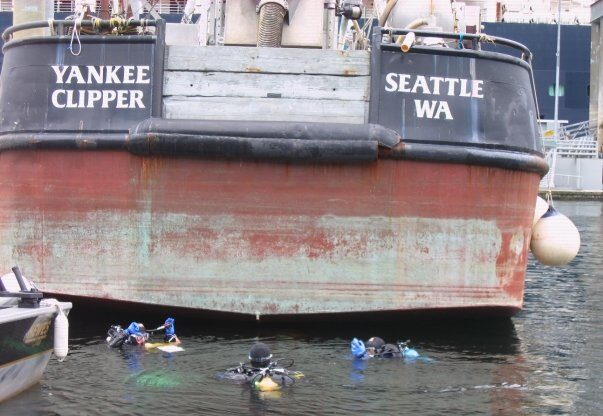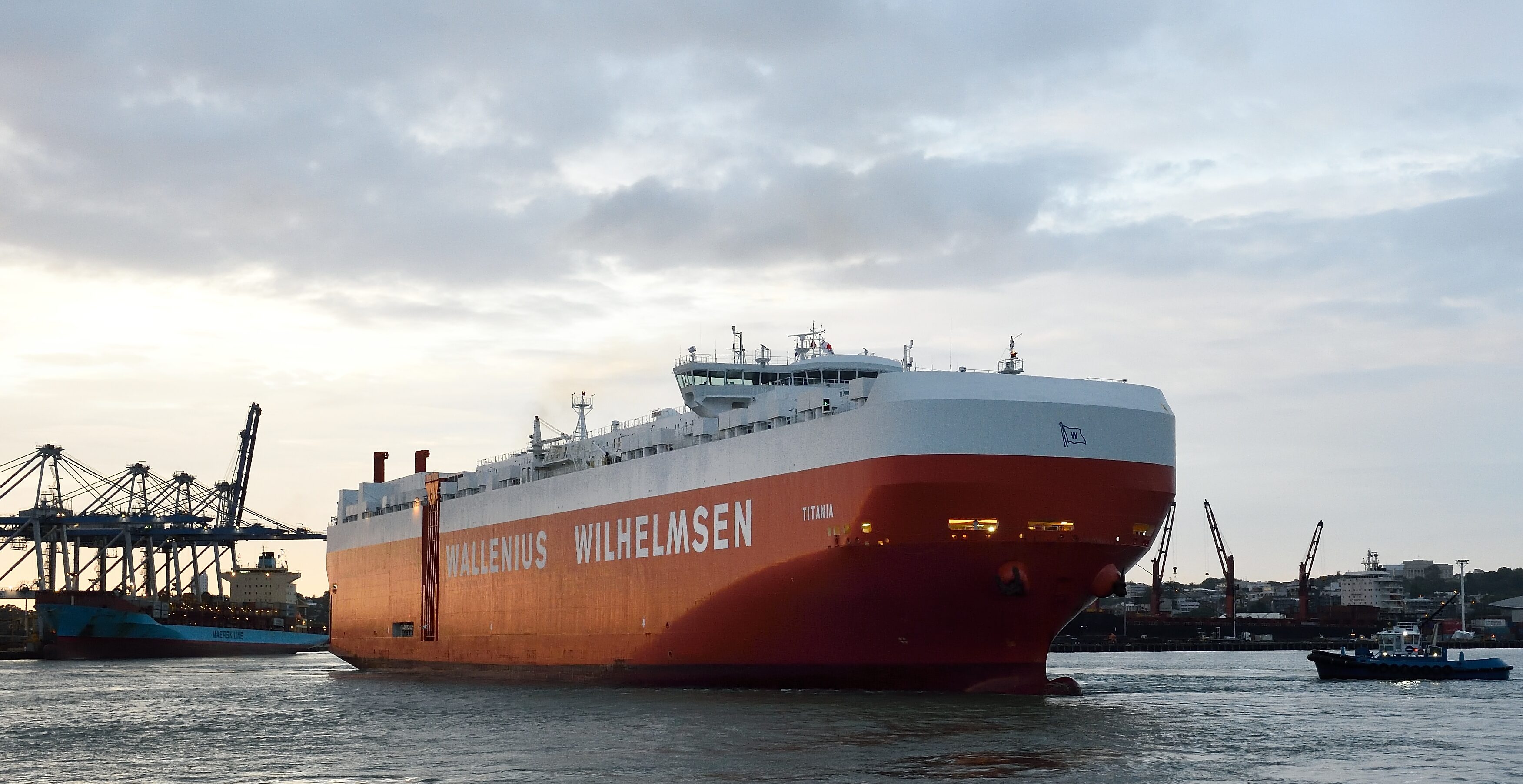
A Scandinavian cargo ship sits tall in the Port of Auckland, New Zealand. (Credit: Tim Adams. CC License)
by Marissa Sandoval
If you’ve ever walked through shrubs only to find critters or seeds on you after you’ve gotten home, you already know a bit about what coastal states deal with regularly. Every week, hundreds of ships arrive in California ports and bring organisms latched on to their exterior. Commercial ships tend to be larger, with arrivals from foreign countries and domestic vessels traveling along the coast. Meanwhile, recreational ships are much smaller, generally do only regional travel and often more idle. But both can act as vectors for the infamous occurrence known as “biofouling,” when small organisms colonize surfaces below water.
“As soon as something settles, similar to the fouling community on our rocky shore, you’ve got succession like barnacles and mussels,” said Gail Ashton, a biologist with the Smithsonian Environmental Research Center (SERC). “Anything that can attach very strongly will do so first. Then you get crevices and amongst those, other animals will be able to settle on top. You get a community building up over time.”
Though a few stowaways may not seem like a cause for concern, invasive organisms that come along for the ride on ship hulls can endanger native wildlife and commercial shellfisheries. To prevent further invasions and minimize the risks associated with biofouling, the International Maritime Organization (IMO) published hull fouling guidelines in 2011 for the maritime shipping industry.
The problem was, the guidelines were just that: suggestions that should be taken, but could be ignored.
Then, in 2017, California and New Zealand decided to take matters into their own hands. They developed regulatory regimes based on the IMO guidelines and published a study on lessons learned in the first year with the new rules in place.
How California and New Zealand Became Hull Monitors
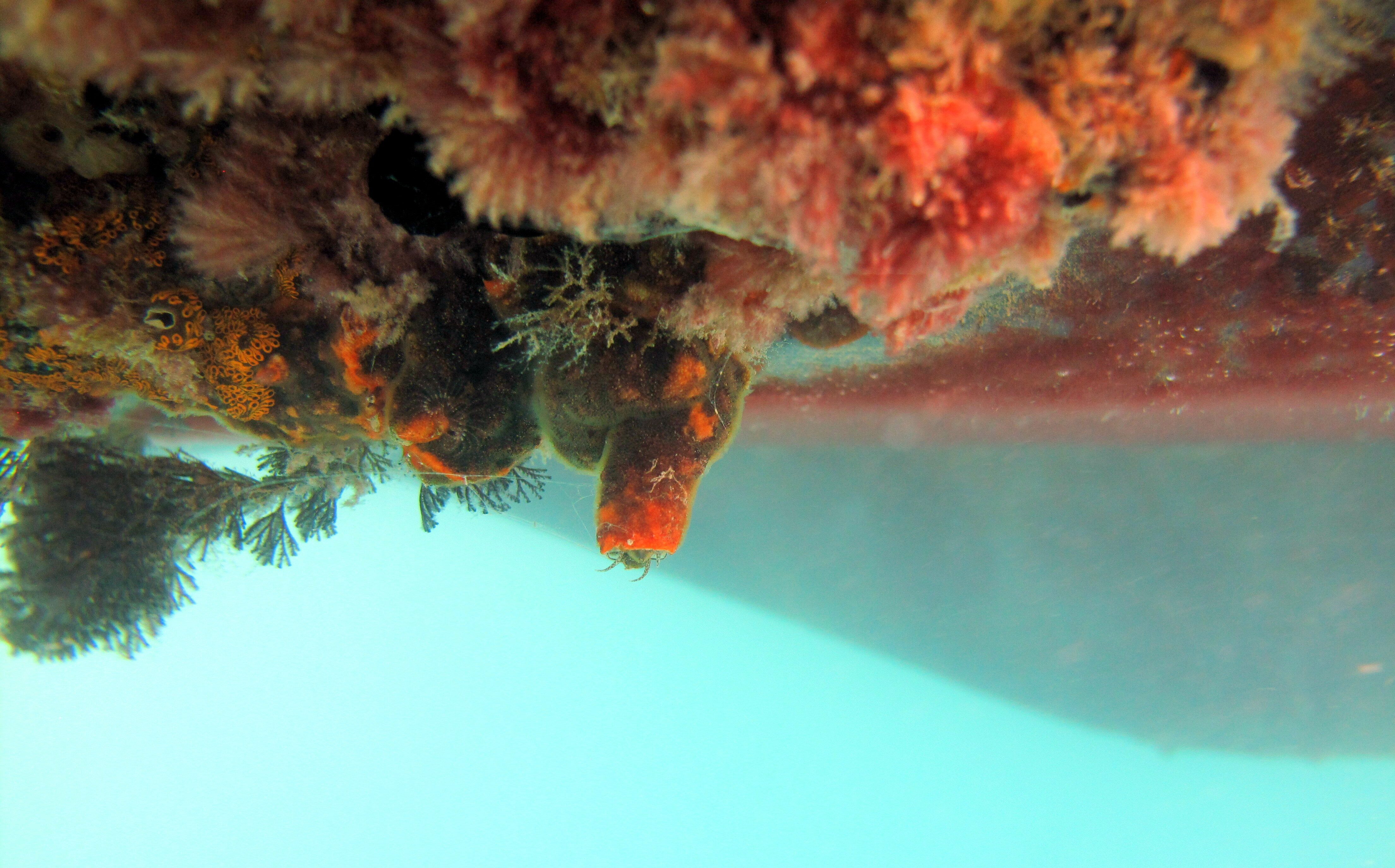
“Biofouling” occurs when underwater organisms like these tunicates and bryozoans cling to a ship’s hull. This can slow the ship down and potentially spread invasive species around the globe. (Credit: Kim Holzer)
The first step was getting the facts. Scientists from the California State Lands Commission, the New Zealand Ministry for Primary Industries and the Smithsonian Environmental Research Center spent years looking at existing antifouling technology and current hull maintenance practices, if any, among arriving ships.
“It was key for us to understand what the shipping industry was doing and how effective it was,” said Chris Scianni from the California State Lands Commission, lead author of the new report.
Ashton helped with this side of the research in SERC’s Marine Invasions Lab. She and other biologists studied organisms attached to recreational boats and larger vessels like tankers, wondering how a vessel’s design or use affects the organisms it carries.
“What can we tell about its behavior that will then influence the species that grow on the bottom?” Ashton asked
Next, California and New Zealand agencies independently focused on what strategies would work best for their state and country. Their hard work came to fruition when they independently implemented parallel biofouling regulations, driving change in the international maritime community.
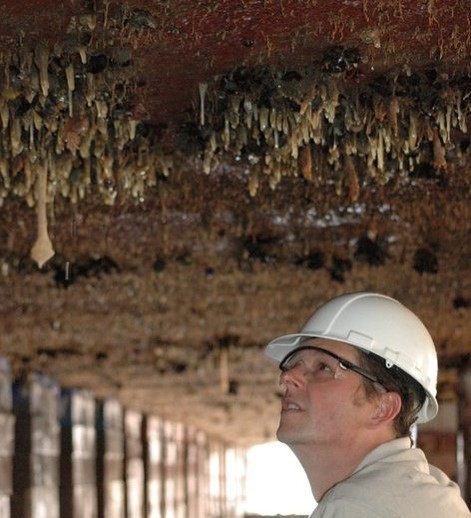
Chris Brown, a former SERC-West technician, stands beneath a vessel looking at the organisms stuck to its bottom. (Credit: Gail Ashton/SERC)
California and New Zealand had two fundamental requirements. Ships needed to have 1) a Biofouling Management Plan, and 2) a Biofouling Record Book on board. In California, this rule applied to new or recently dry docked incoming vessels over 300 tons—like container ships. By contrast, New Zealand’s regulations applied to every foreign vessel, regardless of size and last dry dock. New Zealand also included a four-year period of voluntary compliance.
When vessels enter New Zealand, they must either have an antifouling system or show evidence of cleaning one month prior to or the day after arrival. Inspectors investigate the ships that fail to demonstrate compliance in New Zealand.
Similarly, ships coming to California need to document how they manage biofouling or have a current antifouling system in place. For example, some hull paints can keep critters from sticking to a boat or make it harder to stay on a moving boat. The plan must include details about which antifouling system (or systems) a ship uses. It also needs to include popular hiding areas, like propellers or niche crevices.
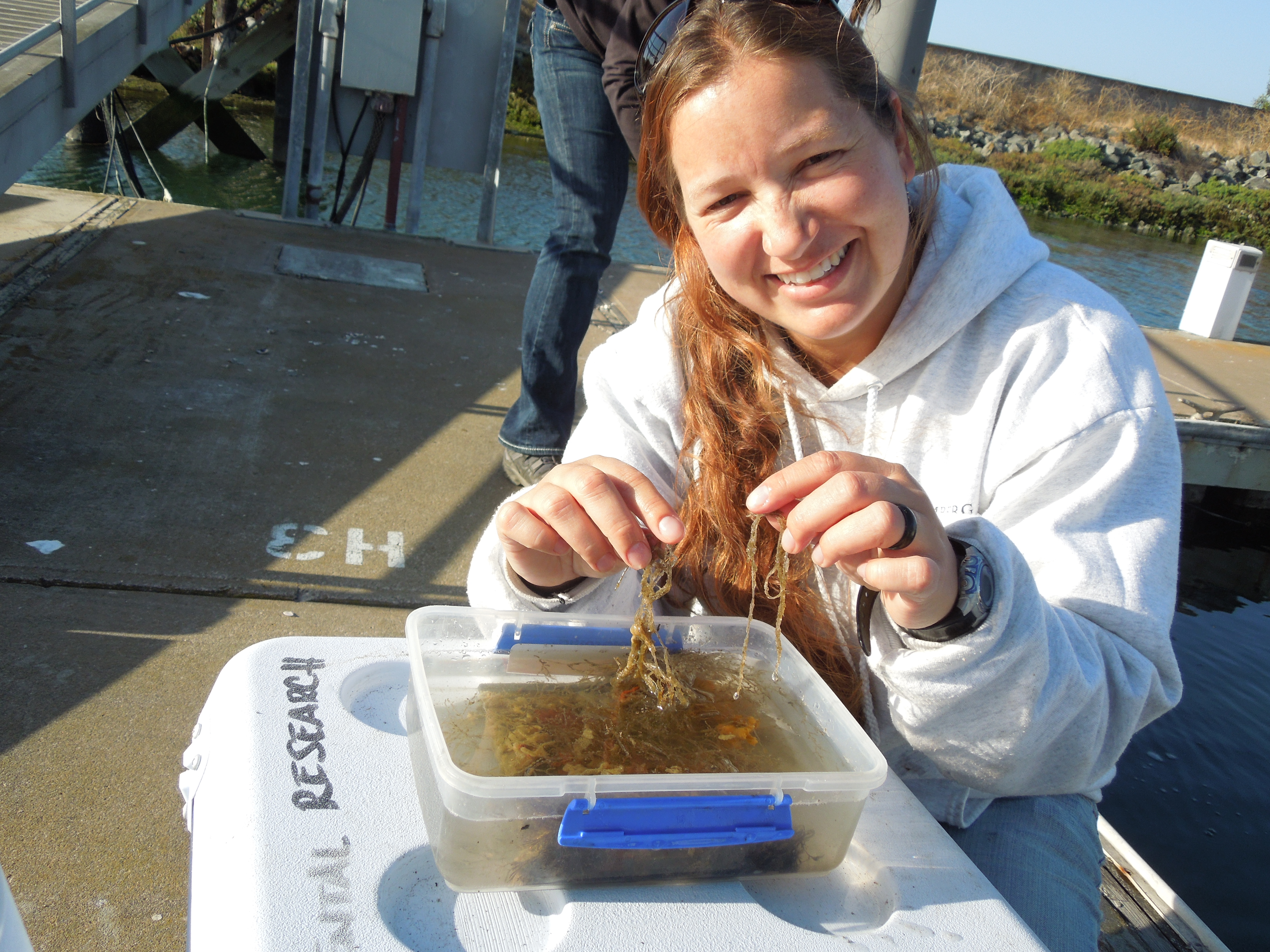
Lina Ceballos Osuna examines a tile retrieved from a marina in San Francisco Bay, coated in marine species. (Credit: Kristen Goodhue/SERC)
SERC scientists have tested some of those treatments in the San Francisco and Chesapeake Bays, using tile-sized panels as proxies for ship hulls. The scientists covered some of the panels with antifouling coatings and left others untreated. Then, they submerged the panels in the water for up to 60 days. By the end of the experiments, untreated panels in both bays were completely covered in marine organisms. Meanwhile, antifouling-treated panels averaged just 60% coverage in San Francisco Bay and a mere 20% coverage in the Chesapeake.
Once the biofouling plan is in place, the second piece—the record book—acts as a written history of all inspections and maintenance related to biofouling.
“We share a mutual goal with the shipping industry, to minimize vessel biofouling,” says Scianni. “We relied on their expertise to inform the development of a set of regulations that are protective and practical to implement.”
However, during the first year of regulations, a whopping 40% of the ships regulators inspected in California weren’t compliant with the update. In New Zealand, the figure was 20%. Most of the ships weren’t deliberately flouting the rules. The California State Lands Commission found that vessel operators in the Pacific simply weren’t aware of the change!
Thankfully, California regulators anticipated a period of adjustment. They gave 60-day grace periods for the ships to put together a plan.
As hoped for, after 60 days the California State Lands Commission team saw over 96% of the reinspected vessels in California ports had made the proper adjustment. It was an encouraging sign that management teams can achieve rapid, successful enforcement of the IMO guidelines. It’s also in vessel owners’ best interests to implement a plan. Doing so saves them from fuel losses (since organisms clinging to their hulls slow them down), not to mention the future hassle of designing a plan in port.
“Because biofouling has been an industry issue forever, there’s a strong financial incentive to minimize drag and fuel cost,” said Scianni. “Primarily we had the same end goal of minimizing the occurrence of biofouling organisms.”
In for the Long Hull
California and New Zealand learned just how vital outreach is for reducing the risk of potential invasive species. Both teams relied heavily on webinars, emails, flyers, guidance documents and website updates. But it’s an ongoing effort.
“We’ll continue requesting the vessels to think ahead and develop their best protection strategies based on their specific operating profile,” says Lina Ceballos Osuna, a former SERC biologist now at the California State Lands Commission. “There’s no one-size-fits-all for antifouling.”
The collaboration shines as a “win-win-win” for the shipping industry, marine researchers and governmental agencies. Ships have less drag and fuel cost when there are fewer fouling organisms. Biologists will always have a better night’s sleep knowing that the biofouling regulations were based on sound science. And governments can devote money and attention toward current marine invaders with less worry about future ones.
There may not be a one-size-fits-all approach to antifouling. But by learning from California and New Zealand’s partnership, regional governments can encourage vessel owners to own a management strategy that works best for them.

